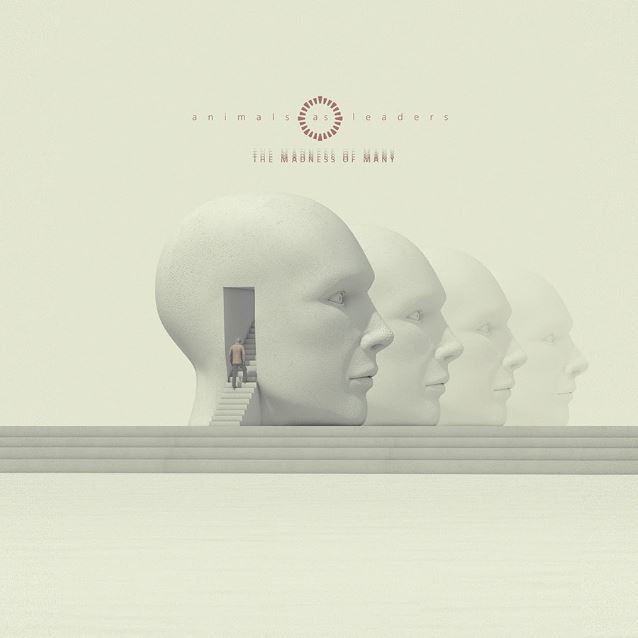Of all the bands to sprout from Meshuggah’s polyrhythmic, detuned tech-metal, Animals As Leaders have always stood out from the pack with their multifaceted theoretical ethos and calculated virtuosity. “The Madness of Many” keeps the trio ahead by diving deeper into the jazz fusion and funk elements of their distinct brand of progressive metal.
Calculated virtuosity
Tosin Abasi has been the main talking point of Animals As Leaders since the band’s inception. His incredibly unique combination of techniques, chord voicings and feels on eight-string guitars — ranging from Pat Metheny-esque noodling and the slamming groove of Victor Wooten to the vanguard of progressive metal — has established him as the ultimate shredder of this decade.
However, rhythm guitar player Javier Reyes and drummer Matt Garstka have also become integral parts of an approach completely different from anything around them. This album features two incredible drum solos and many astounding rhythmic breaks as opposed to obnoxious shredding. This band’s incredible chemistry consistently takes center stage, providing free-flowing artistry within a solid structure.
A rhythmic tapestry
“Arithmophobia” kicks off the album with meandering sitar strains before Garstka weaves a rhythmic tapestry of aggressively syncopated guitar hits. Incredibly agile synchronization makes its prominence clear, with Abasi and Reyes implementing their one-of-a-kind amalgamation of slap and finger-picking techniques. However, a noticeable lack of distortion becomes apparent. The thick chugs of cuts like 2010’s “Wave of Babies” pale before cleaner tones. Indeed, only “Backpfeifengesicht” — arguably the best song title of this year — truly embraces the “djent” style Animals As Leaders helped spearhead in 2009.
“The Madness of Many” demonstrates solidarity from a movement taken over by the likes of Emmure by abandoning its trademark affinity for the bottom string of an extended-range guitar, instead using the extra notes and strings as a means of transcending the conventions of guitar music as a whole. “Ectogenesis” hardly sounds like metal at all, if not for Abasi’s lead, having more in common with Dave Weckl’s hard-hitting funk than anything related to Meshuggah.
Astonishing innovation
Percussive flourishes provide a perfect backdrop for Abasi’s wizardry, as exemplified in “Private Visions of the World.” This track features a tasty groove perfectly lined up with punishingly fluid guitar lines, but never does this song become overtly punishing. Even when the song drops into filthy breakdowns, it still avoids the cliches of their scene by completely forsaking computerized distortion for a much more natural tone. This triggers a re-evaluation of who this trio is as a group of musicians. “The Madness of Many” signals departure from the scene they garnered so much respect in before.
“Inner Assassins” showcases Animals As Leaders’ desire to expand preconceptions of modern progressive rock and metal, as most of it could have become a skull-crushing riot act if not for the band’s constant shift away from recognition. An angular double-picking riff comes on strong, but the tone remains surprisingly discernible. In fact, the low end exists as a foundation for memorable leads and astonishing rhythmic innovations.
“Apeirophobia” brings the most delicate aspects of “The Madness of Many” into perspective. Comprised entirely of extended-range acoustic guitars, Abasi and Reyes show off their classical training and masterful interplay in a composition worthy of the masters of flamenco, baroque and crossover jazz guitar. Though the technicality and energy remain, Animals As Leaders want little to do with metal anymore. This song clarifies what all of the eclectic ventures on this record point towards: this band has officially crossed into its most obscure components.







